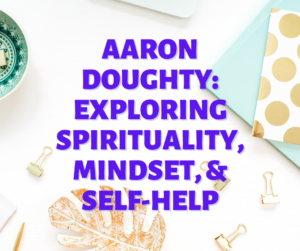Have you ever felt lost or stuck in your personal growth? Many people experience this as they seek ways to understand their place in the world and strive for personal evolution. The Map of Consciousness, a concept developed by David R. Hawkins, offers a thought-provoking framework to explore this journey. While it might seem complex, this scale creation essentially provides a lens to examine your own consciousness. This lens allows us to understand our emotional and spiritual development, giving us a deeper understanding of human experience.
Table of Contents:
Unpacking the Map of Consciousness
David Hawkins, a renowned psychiatrist and consciousness researcher, introduced the Map of Consciousness in his book *Power vs. Force*. He argued that everything, from tangible objects to intangible emotions and thoughts, vibrates at a specific energetic frequency. These attractor fields are said to influence our experiences.
The Map of Consciousness attempts to calibrate these energy fields using a logarithmic scale ranging from 1 to 1000. Hawkins posited that the lower end of the spectrum, starting with shame, represents fear and guilt. As you move up the scale, you reach higher levels that correspond with love, joy, and enlightenment. This journey through the Map of Consciousness represents the evolution of one’s state of being, as described in Hawkins’ book *The Maps of Consciousness*.
Interpreting The Levels: A Closer Look
It’s important to note that this Map of Consciousness doesn’t imply a judgment of “good” or “bad” energy. Instead, think of it like states of water: ice, liquid water, and steam. These states all represent water, yet they express themselves differently based on their energy levels.
Similarly, the Map of Consciousness suggests that people primarily reside in a “predominant state” on the scale, experiencing fluctuations as life throws curveballs. For instance, you could generally be an optimistic person. However, a stressful event may temporarily trigger anxiety, often associated with lower energy levels on the Map. You can find a summary in his words explaining this concept in my previous post.
So, what makes the Map of Consciousness practical? This understanding could provide a framework to understand your reactions to situations, recognize patterns in your behavior, and ultimately make choices that resonate with a higher energetic state. You can find a detailed breakdown of each level and their characteristics in Hawkins’s books like Power vs. Force and Letting Go.
Measuring Consciousness: Exploring the Possibilities
While there are different perspectives on how to accurately pinpoint your position on the Map of Consciousness, one controversial method is muscle testing, a concept I discuss in my last post. This method, often associated with applied kinesiology, attempts to tap into the body’s energy fields. However, it’s crucial to approach this technique with caution, ensuring ethical considerations and integrity are prioritized.
Now, the fascinating thing about the Map of Consciousness is its broader implications. Some individuals believe it can extend beyond measuring individual consciousness to evaluate organizations, belief systems, or even historical events. This concept suggests that collective consciousness, encompassing the energy of a group, can be calibrated as well. However, approaching this aspect with discernment and healthy skepticism is essential.
FAQs About Map of Consciousness
What does the Map of Consciousness tell us?
The Map of Consciousness provides a framework for understanding different levels of human consciousness. These levels are categorized based on their corresponding energy levels, which are believed to be quantifying consciousness. The Map suggests that our thoughts, emotions, and beliefs all have a vibrational frequency that can be measured and categorized, influencing the phenomena consistent with our energetic state.
How can I use the Map of Consciousness in my everyday life?
You can use the Map of Consciousness as a tool for self-awareness and personal growth. By understanding the different energy levels and their associated emotions, you can become more conscious of your own thoughts, feelings, and behavioral sciences. This awareness can help you identify areas for personal growth and make choices that align with higher states of consciousness.
For example, practicing forgiveness or gratitude can elevate your overall energy and shift you towards a more positive state. You can then start to observe how these shifts in energy impact your interactions and experiences. This exploration encourages you to cultivate greater self-awareness and make choices aligned with your desired state of being.
Is the Map of Consciousness scientifically proven?
While David Hawkins’s research, which drew upon his experience working in the field of behavioral sciences, contributed significantly to the field of consciousness studies, the Map of Consciousness doesn’t have widespread scientific validation. It relies heavily on subjective experiences and interpretations rather than traditional empirical data. Some critics argue that the muscle-testing method, which underpins many of the Map’s claims, lacks scientific rigor.
However, exploring these concepts can still offer valuable insights into human behavior, motivations, and the nature of consciousness itself. It is essential to approach the Map of Consciousness with an open mind but also critically examine its foundations and consider alternative perspectives.
Conclusion
The Map of Consciousness presents an interesting framework for exploring human consciousness, our energetic expressions, and the pursuit of personal evolution. While some aspects might lack definitive scientific proof, understanding these concepts can provide a fresh perspective on your own emotions, thought patterns, and actions. This, in turn, can motivate personal growth and more conscious choices in line with your desired energetic state, even if the scientific community continues to examine its validity.
Remember, this journey of consciousness is unique for each individual. As you delve deeper into this map, you might find yourself creatively expressing new aspects of yourself. Approach this exploration with an open mind, but also don’t be afraid to cast judgment and critically evaluate the concepts presented. Ultimately, the Map of Consciousness can be a powerful tool for self-reflection and understanding the human experience.

